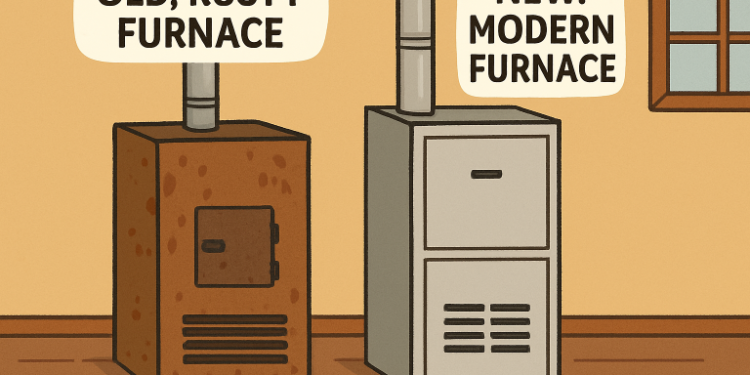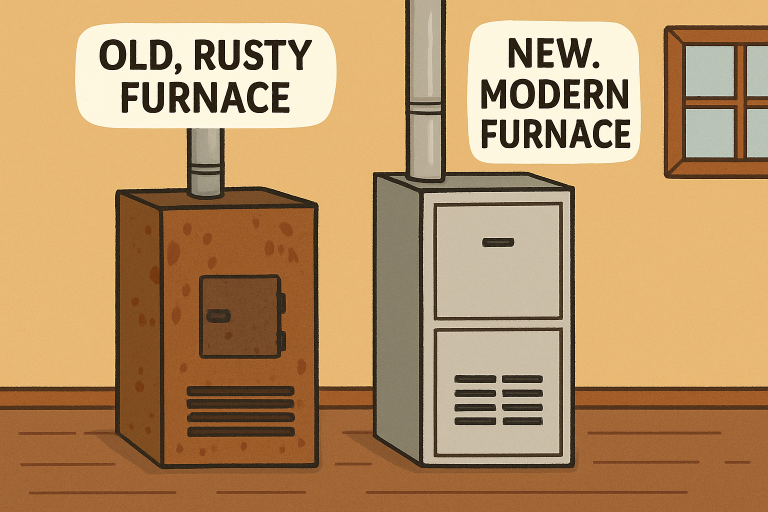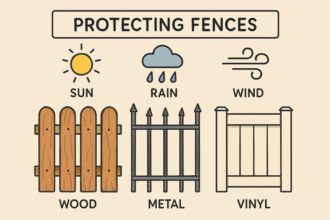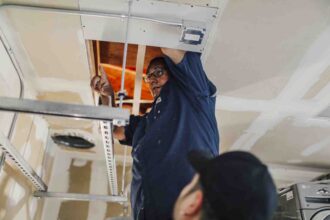Is It Time to Replace Your Old Furnace?

Table of Contents
Understanding the Lifespan of a Furnace
Furnaces are the backbone of a comfortable home during cold seasons, yet many homeowners are uncertain about when it’s time for a replacement. A traditional furnace will typically last 15 to 20 years with regular care. As your system ages, you might notice a steady rise in energy bills or a decline in your home’s comfort level. These are common signs that your equipment could be losing efficiency. For families living in colder climates, such as Salt Lake City, maintaining routine care and making timely upgrades is essential for both comfort and efficiency. If you’re considering options for furnace and AC installation in Salt Lake City, understanding the right time to invest in a new unit can make all the difference for your household’s comfort and budget.
Efficient heating not only safeguards your comfort but also helps keep energy costs manageable. As furnaces age, even consistent maintenance only prolongs functionality to a certain extent. Eventually, upgrading becomes the most practical solution, especially when a unit is no longer reliable or safe.
Signs Your Furnace May Need Replacement
- Frequent Repairs: With ongoing repairs, the fixes can quickly add up—both in terms of inconvenience and expense. When you find yourself making multiple service calls per season, it’s likely time to consider replacing your furnace.
- Increased Energy Bills: A spike in monthly energy costs often signals an inefficient or aging system that’s struggling to keep up with demand.
- Uneven Heating: Cold spots in different rooms suggest that the furnace no longer distributes heat evenly throughout your home, which decreases comfort and indicates an underlying problem.
- Unusual Noises: Rattling, buzzing, or other unfamiliar sounds coming from your furnace shouldn’t be ignored—they point to mechanical or structural issues.
- Visible Signs of Wear: Rust, cracks, and corrosion are immediate red flags. They indicate a unit reaching the end of its usable life and potentially posing a safety risk, such as carbon monoxide leaks.
For a deeper understanding of energy efficiency considerations and guidance on different home heating systems, you can visit Energy.gov’s Home Heating Systems guide.
Upgrading to a modern, energy-efficient heating system can significantly reduce your utility bills while improving comfort throughout your home. Regular maintenance and timely inspections ensure your system runs safely and efficiently for years to come.
Benefits of Upgrading to a New Furnace
Modern furnace designs emphasize efficiency and consistent comfort. Upgrading to a new unit results in lower utility bills because of improved fuel efficiency and advancements such as variable-speed motors and smart thermostats. In addition to financial savings, newer furnaces help reduce the environmental footprint of your household by lowering carbon emissions.

Enhanced air quality is another significant benefit, as newer systems incorporate more effective filtering and ventilation technology. With improved airflow and more effective temperature management, homeowners often notice a difference in comfort immediately after installation. Regular home heating service can ensure that your new furnace continues to operate at peak efficiency while preventing costly repairs over time. Investing in quality heating now pays dividends in both comfort and health for years to come.
Evaluating Repair vs. Replacement Costs
The industry-recommended 50% rule serves as a reliable benchmark—if repair expenses approach or exceed half the cost of a new furnace, replacement becomes the more sensible option. Additionally, aging systems may require parts that are no longer readily available, further increasing the cost and difficulty of repairs. Don’t forget to factor in the ongoing savings from improved energy efficiency when calculating the long-term value of a new furnace.
According to This Old House, investing in a high-efficiency furnace can reduce annual heating bills by up to 30% for many households, making the shift economically wise as well as practical. Many homeowners also notice improved indoor air quality and quieter operation with newer models. Over the lifespan of a modern furnace, these benefits can translate into both financial savings and a more comfortable living environment.
Choosing the Right Furnace for Your Home
Selecting a new furnace involves weighing several key factors, including the appropriate size for your square footage, the ideal fuel type (natural gas, propane, electric, or oil), and important efficiency ratings like AFUE (Annual Fuel Utilization Efficiency). Furnaces today offer a range of options tailored to different climate needs and usage patterns.
Consulting with a heating professional is recommended, as they can assess your home’s unique requirements and recommend the most suitable models, helping you gain both comfort and efficiency. Proper installation is crucial to ensure optimum operation and maximize longevity.
Timing Your Furnace Replacement
Many homeowners wait until their furnace has a total breakdown to replace it, but this can leave their home uncomfortably cold and create unnecessary stress. Scheduling your furnace replacement during the off-season—typically in late spring or early fall—means more appointment availability and sometimes better deals on equipment and labor. Planning prevents emergencies and ensures uninterrupted comfort for your family.
Conclusion
Recognizing when your furnace is past its prime and understanding the wide-ranging benefits of a modern replacement helps homeowners make the best decision for comfort, efficiency, and safety. Proactive investments in home heating mean more than just lower bills—they ensure healthy air, reliable warmth, and valuable peace of mind every winter.






